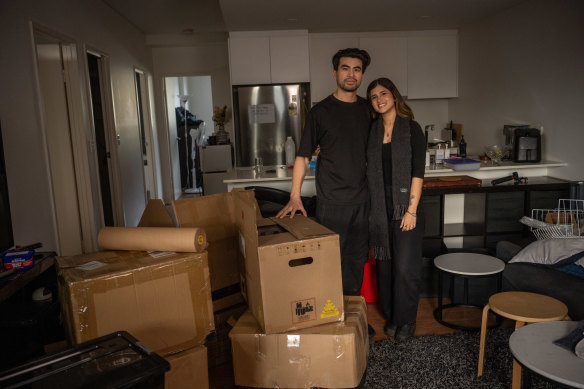House prices have soared by at least 20 per cent over the past year in a string of Sydney suburbs, including sought-after inner pockets, downsizer hotspots and more affordable locations further afield.
The gains were broad-based and the majority of suburbs are more expensive than a year ago, albeit many posted more moderate growth as Sydney’s upturn loses some steam, Domain’s House Price Report for the June quarter, released on Thursday shows.
House prices jumped more than 30 per cent in Burwood to a median of almost $3.16 million, Glebe ($2.7 million) and Fairlight ($3.66 million) over the 12 months to June.
There were gains of at least 20 per cent in Collaroy Plateau, Bondi Junction, Neutral Bay and Chatswood.
Further from the CBD, buyers flocked to less pricey neighbourhoods such as Bexley (up 24 per cent to $1.55 million) and North Parramatta (up 20 per cent to $1.33 million).
Domain chief of research and economics Dr Nicola Powell said in some premium suburbs, high interest rates have less of an impact on wealthy buyers compared to elsewhere.
“These tightly held locations, where people – irrespective of what’s happening with the price cycle – [see] the moment in time is right for themselves, or the home is right, to make the move,” she said.
She also noted the growth in middle-of-the-road suburbs, where buyers are looking for a detached house they can afford, especially as the cash rate stays high for longer and puts pressure on borrowers.
“People have become priced out of a suburb, and they’re looking to those more affordable locations to purchase. That in itself can bump up prices,” she said.
In the unit market, buyers favoured luxury offerings in Kirribilli (up 34.3 per cent to $1,575,000) and Double Bay (up 18.2 per cent to $1,956,000).
Buyer’s agent Henny Stier said buyers were looking further afield than their ideal suburb to avoid an expensive mortgage amid the rising cost of living.
“People are being forced to consider living further out than they would ideally like – they’re having to make those compromises,” the OH Property Group co-founder said.
“They’re self-regulating because they don’t want to be under huge financial stress.”
She noted that as well as popular inner suburbs, the biggest movers include more affordable areas that are still in relatively central locations. Marsfield, for example, past Ryde, has access to public transport, shopping, healthcare and Macquarie University.
And she attributed the unit gains to demand from downsizers who could afford to pay top price for luxury apartments.
The broad-based gains have put pressure on home buyers.
Krish Waje and her partner Quincy Lim are moving from Sydney’s west to the Blue Mountains to get a lifestyle change, larger home and better value for money – but still needed to move further away and borrow more money than they expected.
“We always had our heart set on the Blue Mountains, but initially we were hoping to find something in the lower Blue Mountains - Springwood, Blaxland, Winmalee – a bit closer to Sydney,” the 26-year-old business owner said.

Krish Waje and her partner Quincy Lim have bought a home in the Blue Mountains to have a lifestyle change and also because house prices in Sydney itself are so high. They are in the process of packing up their Toongabbie unit.Credit: Wolter Peeters
“Places would get sold - they would get sold a bit or a lot higher than what the initial listing price was.”
After eyeing all the other young couples at open inspections and extending their budget, they found a place in the Mid Mountains. Her partner also sold his first house in Edmonson Park.
“Property prices in Sydney, they are crazy. For the size of the plot we have bought, if you were to look at that in Sydney you’d be looking $3 million minimum. So we are very grateful we can move into that lifestyle without selling an arm and a leg,” she said.
Impact Economics and Policy lead economist Dr Angela Jackson said the property market had defied expectations, rising in price despite higher interest rates.
She said the broad-based gains across a range of suburbs meant that for younger Australians hoping to buy a home it would not be achievable without significant help from their parents.
She attributed the gains to supply and demand, as not enough new homes have been built for a growing population and empty nesters have been tending to stay in current homes rather than downsize and turn over the housing stock. She also noted the demand for property as a tax advantageous form of investment and called for reform to stamp duty and capital gains tax.
“That issue is just getting worse over time. So really now for middle income earners or even higher income earners to enter the property market without help from the bank of mum and dad is becoming increasingly out of reach,” she said.